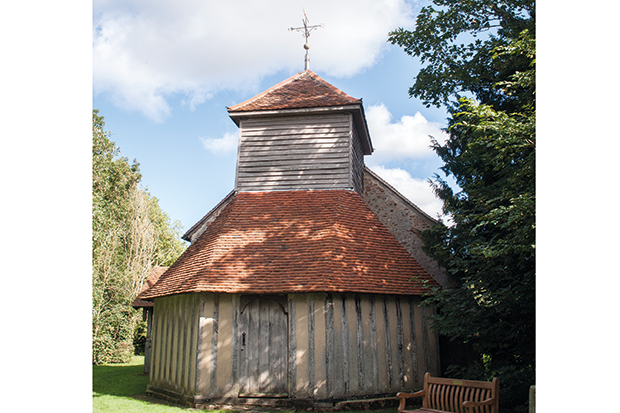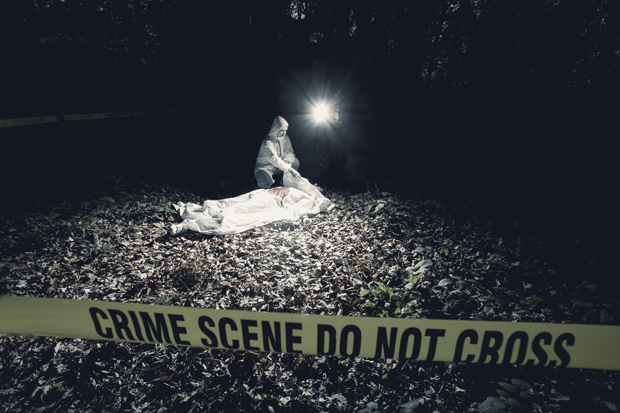Here are two approachable and distinctive books on our churches, great and small. Simon Jenkins’s cathedrals survey follows his earlier volumes on England’s best churches and houses, and like them includes fine photography by the late Paul Barker of Country Life. Too hefty to serve as a guide book, it can be consulted as a reference work, or read with pleasure for its vivid and well-informed descriptions.
Jenkins’s parish churches book was a publishing hit in 1999 — partly, one suspects, because it stimulated parochial rivalries with its five-star rating system. The cathedrals are ranked too. At the top are the author’s personal favourites, the ‘three graces’ of Ely, Lincoln and Wells, which share the maximum score with Canterbury, Durham, Westminster Abbey and Winchester. The single-star league is made up mostly of Catholic cathedrals, and some of the C of E’s dimmer promotions from urban parish churches, such as Blackburn and Portsmouth.
Descriptions are necessarily brisk; even mighty Canterbury gets little more than 2,000 words. Cathedralgoers who like to track the medieval masons’ progress from telltale signs in the fabric, or who lock on to the amazing variety of furnishings and monuments found in so many English cathedrals, should look to their Pevsners instead. But Jenkins is a consistently stimulating companion, and his accounts are cheerfully free from conventional pieties, religious or secular. He is particularly dismissive of the ‘nails, spikes and agony’ school of post-war religious art, seen in strength at Sir Basil Spence’s rebuilt Coventry cathedral (which nevertheless gets three stars).
By contrast, the book is refreshingly open to Victorian things. The great George Gilbert Scott receives his due, both for his scholarly recreation of lost or perishing fabric — the central tower at Chichester, the ravaged west front of Lichfield — and for the quality and visual power of his furnishing designs. Jenkins even likes some Victorian stained glass, an object of reflex disdain for much of the last century. He must also be the only writer in recent years to discuss the Arundel tomb at Chichester without invoking Larkin’s poem about it.
So to Dixe Wills’s survey. His selection of 60 tiny churches is catholic with a small ‘c’: Quakers, Methodists, even one Antiochian Orthodox chapel (self-built in Norfolk by a defector from the Anglican ministry), as well as a good few Scottish and Welsh ones. Nearly all have rural settings, and many of these are extremely beautiful. It’s hard to turn the pages without wanting to visit them. Details of services and opening arrangements are provided too.
The tone is jaunty, and there is certainly much fun to be had among these toy-like buildings. Bremilham in Wiltshire, for instance, now has just one service a year; only the chancel of the medieval church has survived here, measuring just 11 by 13 ft. So the congregation has to stand on the grass outside.
Sometimes Wills’s larkiness leads him astray, as when he misidentifies a stained-glass Supper at Emmaus at Chapel-le-Dale as an under-attended Last Supper. But he is responsive to poetry and pathos too. Perhaps the most poignant inclusion is the Catholic chapel at Lamb Holm on Orkney, lovingly improvised from two Nissen huts by Italian prisoners of war, in which every detail tells of homesickness for the warm civilised south.
Aware that a definitive selection is impossible, Wills invites his readers to point out omissions. So here goes: something from the Lake District — the little yew-girt church at the head of Wastwater, for instance, with its faintly cultic monuments to mountaineers claimed by the surrounding peaks — would have filled an empty corner on his map.
These are the great feasts and tiny treats of our church architecture. Small buildings can evoke special loyalty and affection, and Wills includes many that have been rescued from redundancy by the Churches Conservation Trust and similar charities. But cathedrals are necessarily living concerns, and Jenkins reports some striking developments here. Since 2000, Anglican cathedral attendances have risen markedly, from 25,000 to 35,000. He quotes the sociologist Grace Davie on the appeal of their ‘vicarious religion’: services as cultural or meditative rituals, allowing visitors to come and go ‘without commitment or explanation’.
Cathedrals also double as civic buildings, as tourist lures, and as emblems of local and regional pride. Leicester, in the wake of Richard III’s surprise disinterment, is a specially interesting case. Jenkins draws parallels between the modern city’s embrace of ‘this appalling monarch’ and the medieval hunger to notch up a local saint as a focus of devotion and a source of income from pilgrims. The new throne for the Bishop of Leicester is illustrated: quite a groovy article, in its neo-Sixties way. It looks worth going to see.
But what does the future hold for ordinary parish churches — especially those one-star or no-star buildings in humdrum places, too big for their dwindling congregations, too thin in artistic interest for secular pilgrimages? Best not think about that for now.
The post Little and large appeared first on The Spectator.
Got something to add? Join the discussion and comment below.
Get 10 issues for just $10
Subscribe to The Spectator Australia today for the next 10 magazine issues, plus full online access, for just $10.
You might disagree with half of it, but you’ll enjoy reading all of it. Try your first month for free, then just $2 a week for the remainder of your first year.














Comments
Don't miss out
Join the conversation with other Spectator Australia readers. Subscribe to leave a comment.
SUBSCRIBEAlready a subscriber? Log in